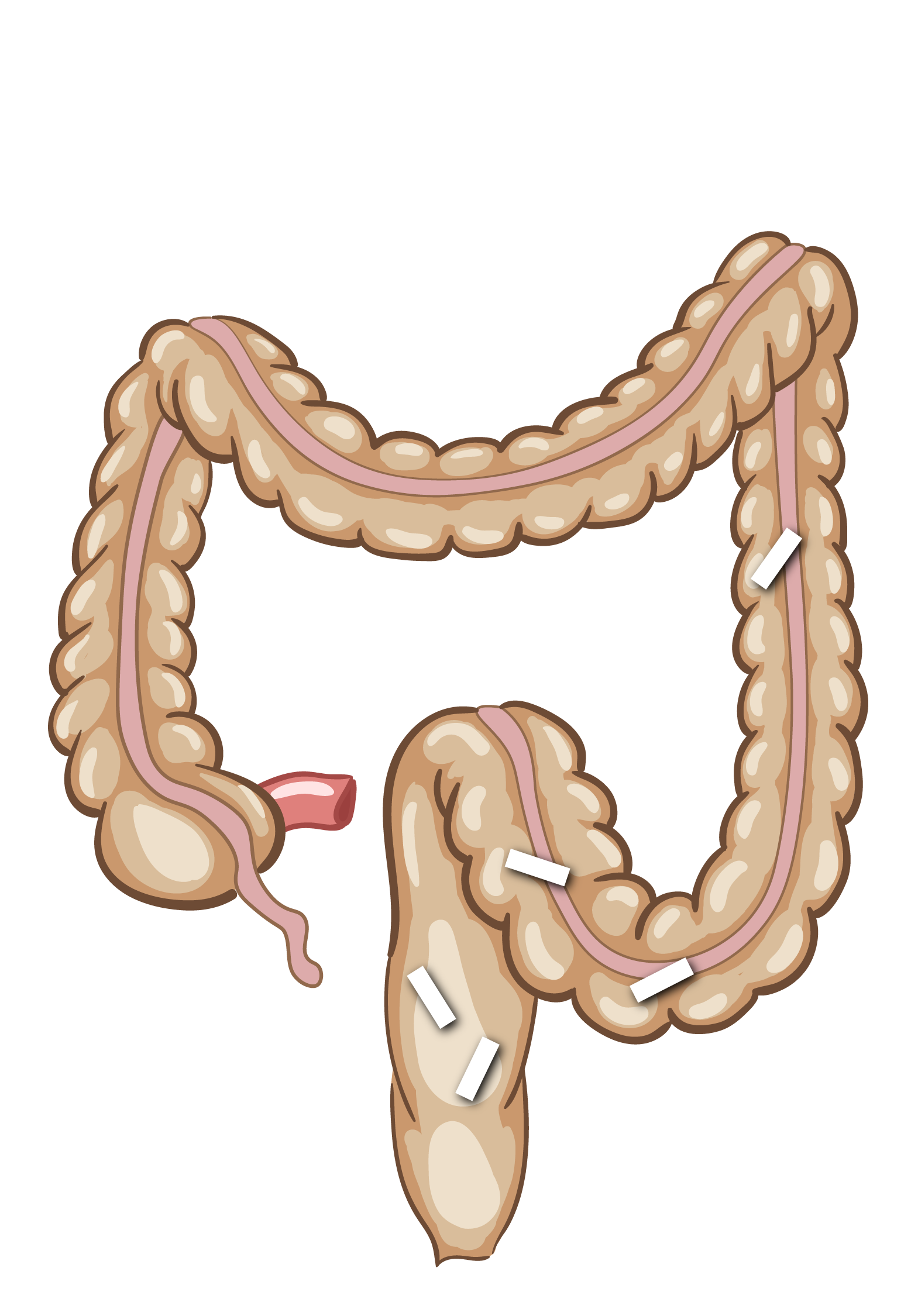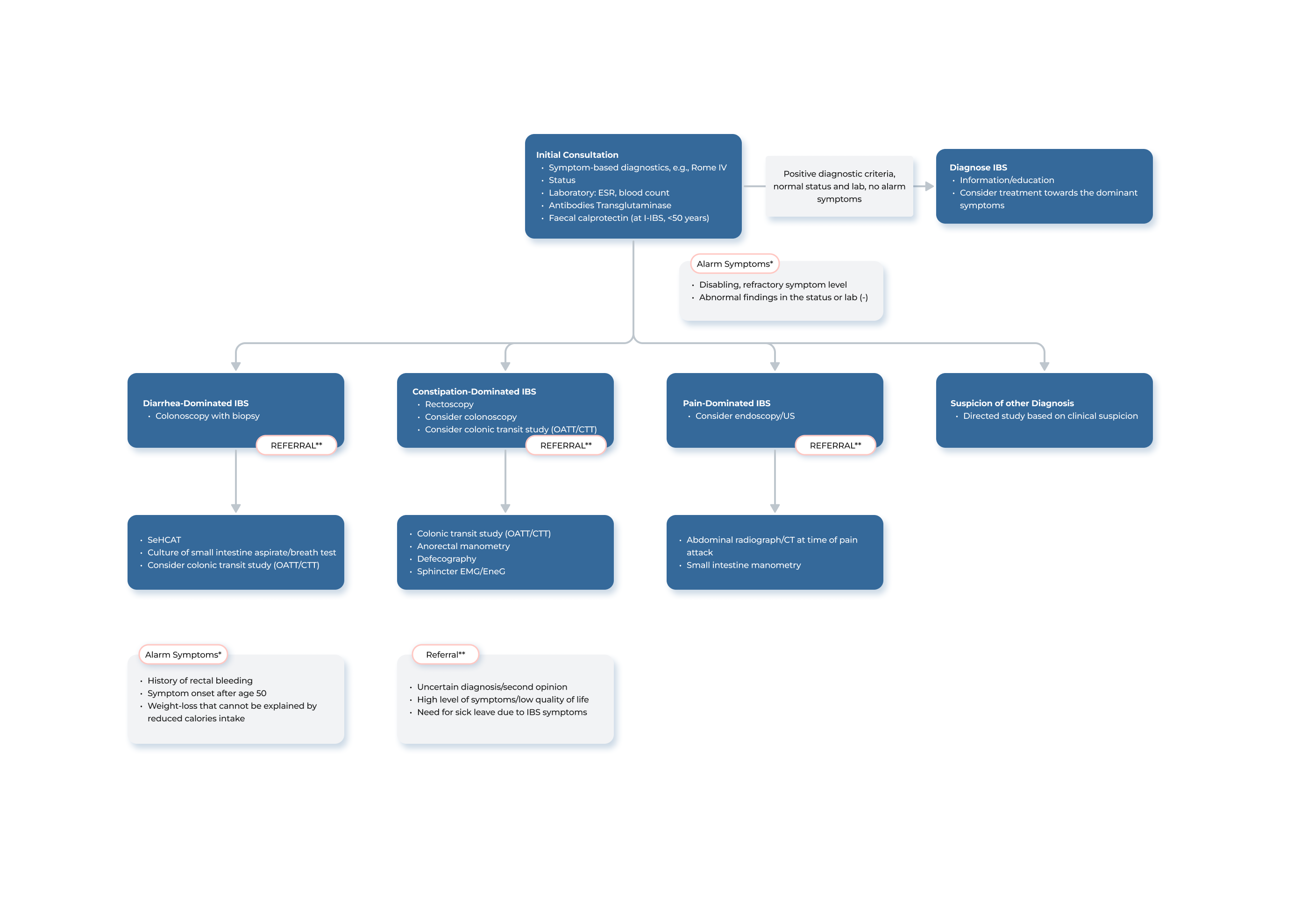Operatori sanitari
Siamo orgogliosi di offrire i state-of-the-art marcatori radiopachi Transit-Pellets progettati per migliorare la valutazione e il trattamento dei disturbi della motilità come stitichezza, diarrea e sindrome dell’intestino irritabile (IBS). I nostri segnalatori sono prodotti secondo il Transit-Pellets method. Inoltre, forniamo un rapporto di test di transito intestinale standardizzato online progettato per i medici curanti e i radiologi.
Metodo convalidato e marcatori del transito del colon sicuri per la valutazione quantitativa del tempo di transito colico totale e segmentale
Il metodo Transit-Pellets method e i marcatori radiopachi Transit-Pellets (radiopaque markers) possono essere utilizzati per:
- Misurare il transito del colon rapido, normale e rallentato
- Distinguere tra stipsi da transito rallentato e stipsi da transito normale
- Identificare una disfunzione del colon segmentaria in pazienti affetti da stipsi
- Distinguere tra diarrea da transito accelerato e normale
- Identificare gli effetti del trattamento su pazienti affetti da stipsi cronica
Un test del transito del colon con il metodo Transit-Pellets method, precedentemente noto come Abrahamsson method, e i marcatori radiopachi Transit-Pellets possono quantificare la gravità dei problemi di transito. Il test può essere importante nel determinare l a necessità di altre procedure di esame, selezionare la terapia appropriata e prevedere il prognostico a lungo termine. I risultati del test possono essere utilizzati per guidare il processo decisionale in queste aree.
Eventuali riferimenti sono disponibili nella sezione VALIDATED METHOD.
Illustrazione del movimento dei marcatori Transit-Pellets

Questions?
Contact Us. We’re here to help!
Diana Nyström
+46 (0) 8-460 072 06
diana.nystrom@medifactia.com






